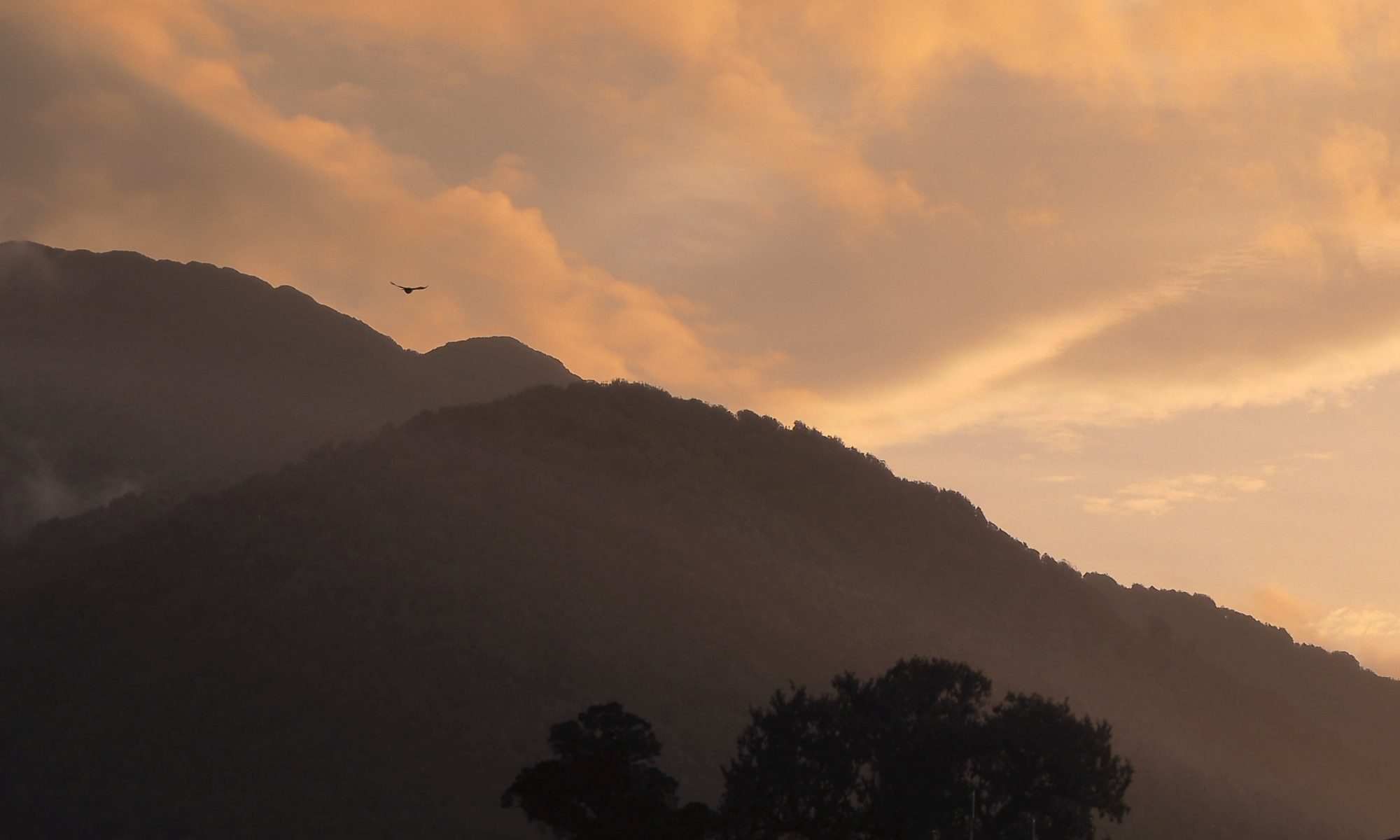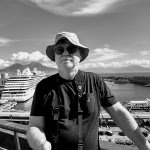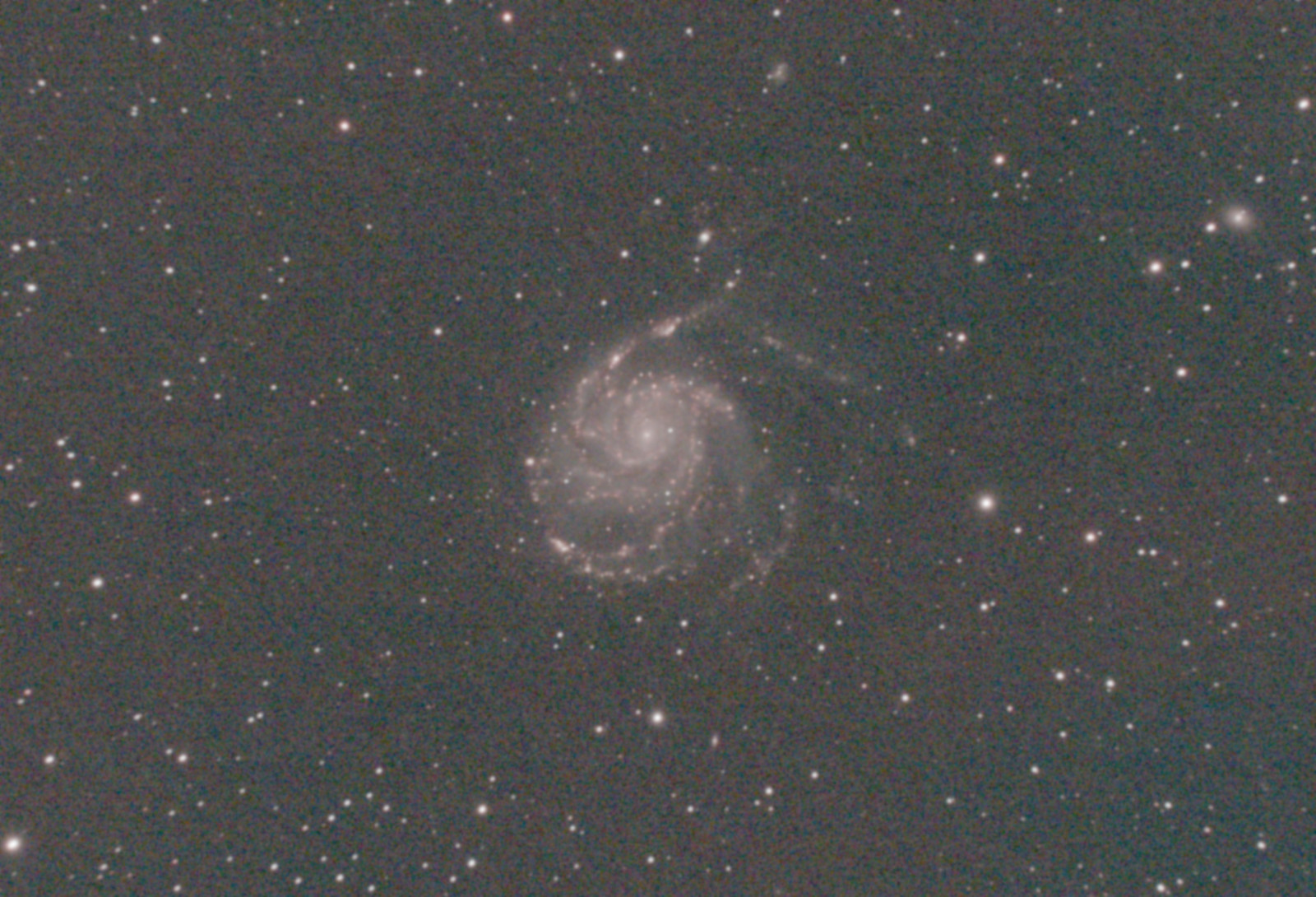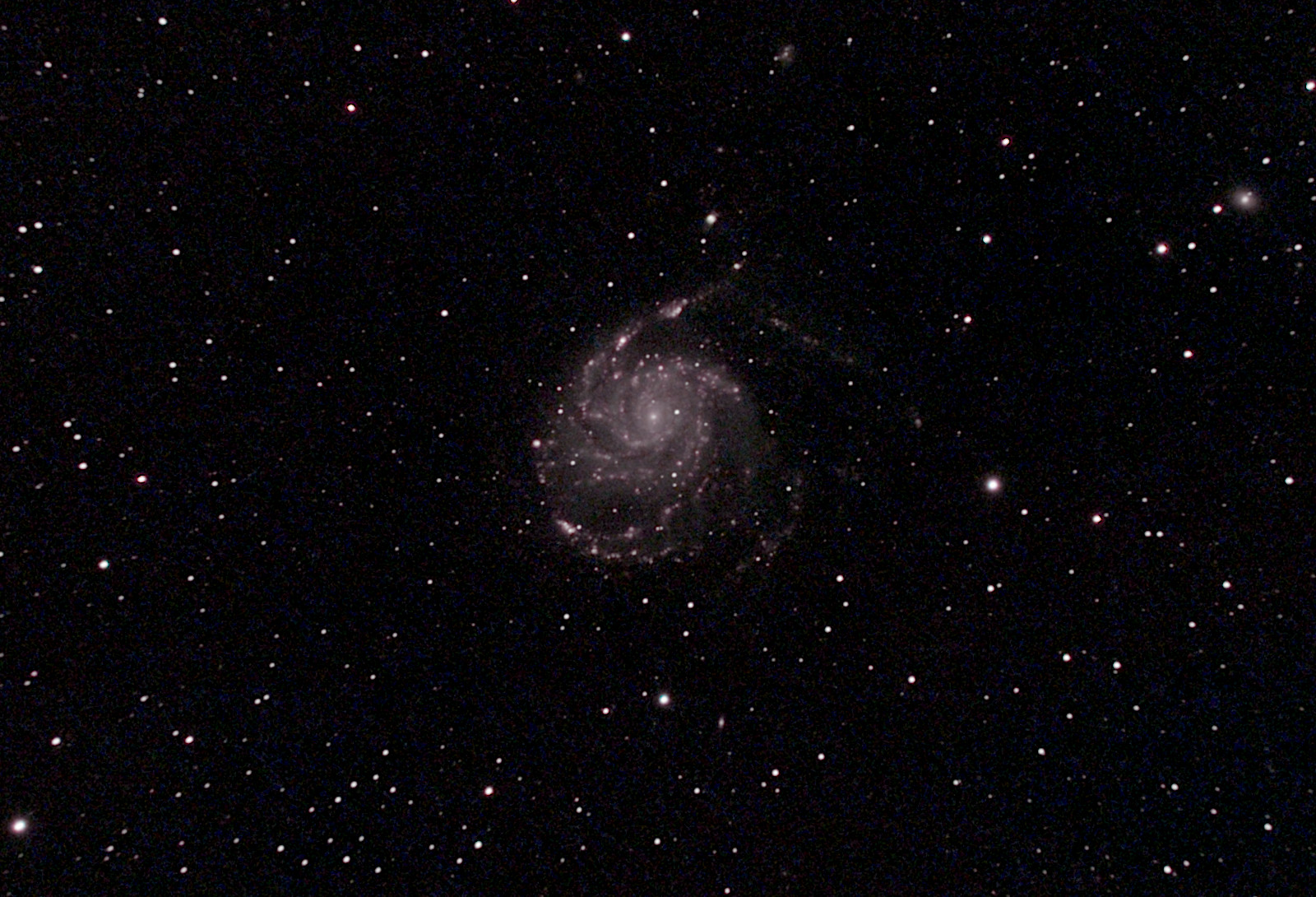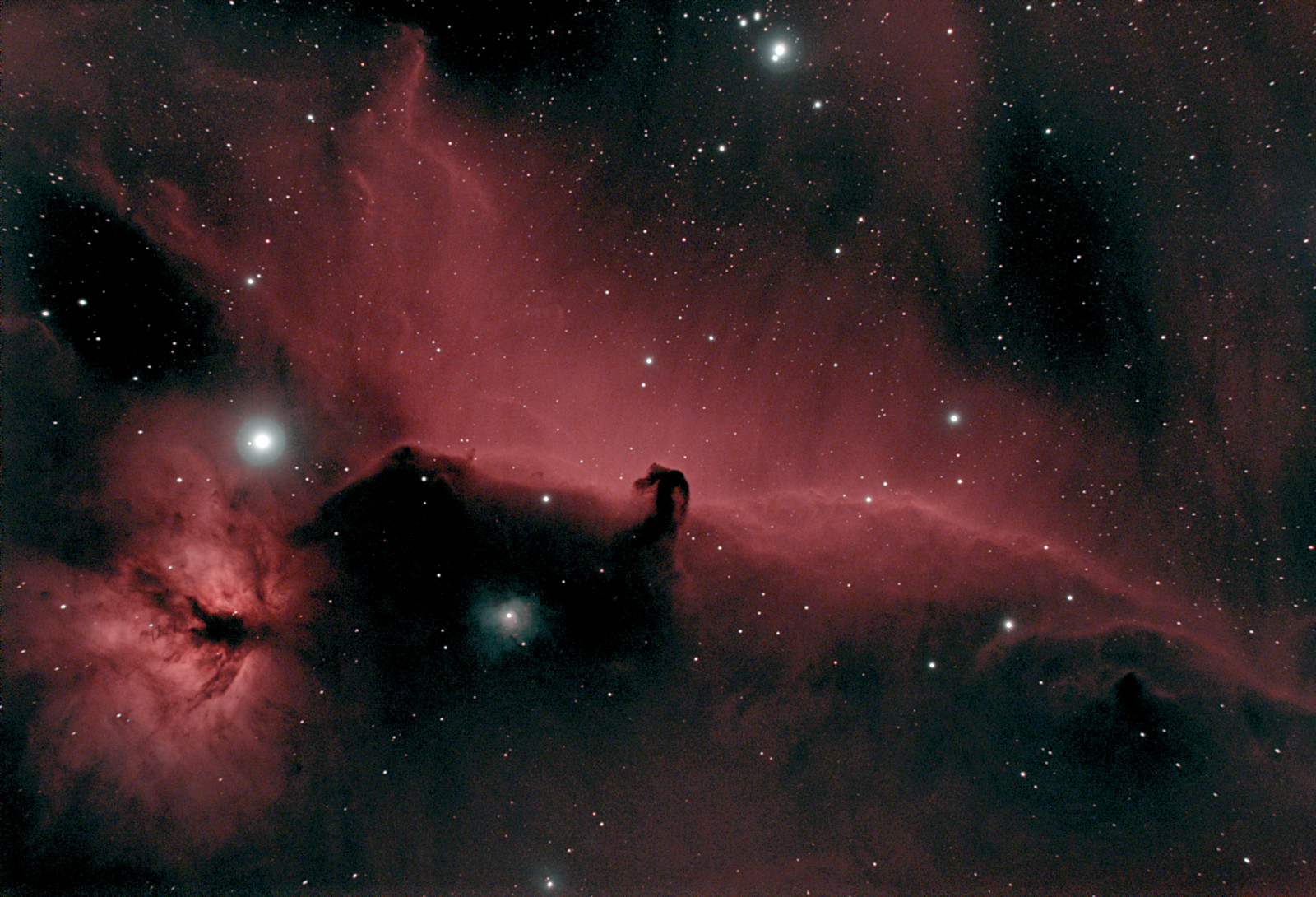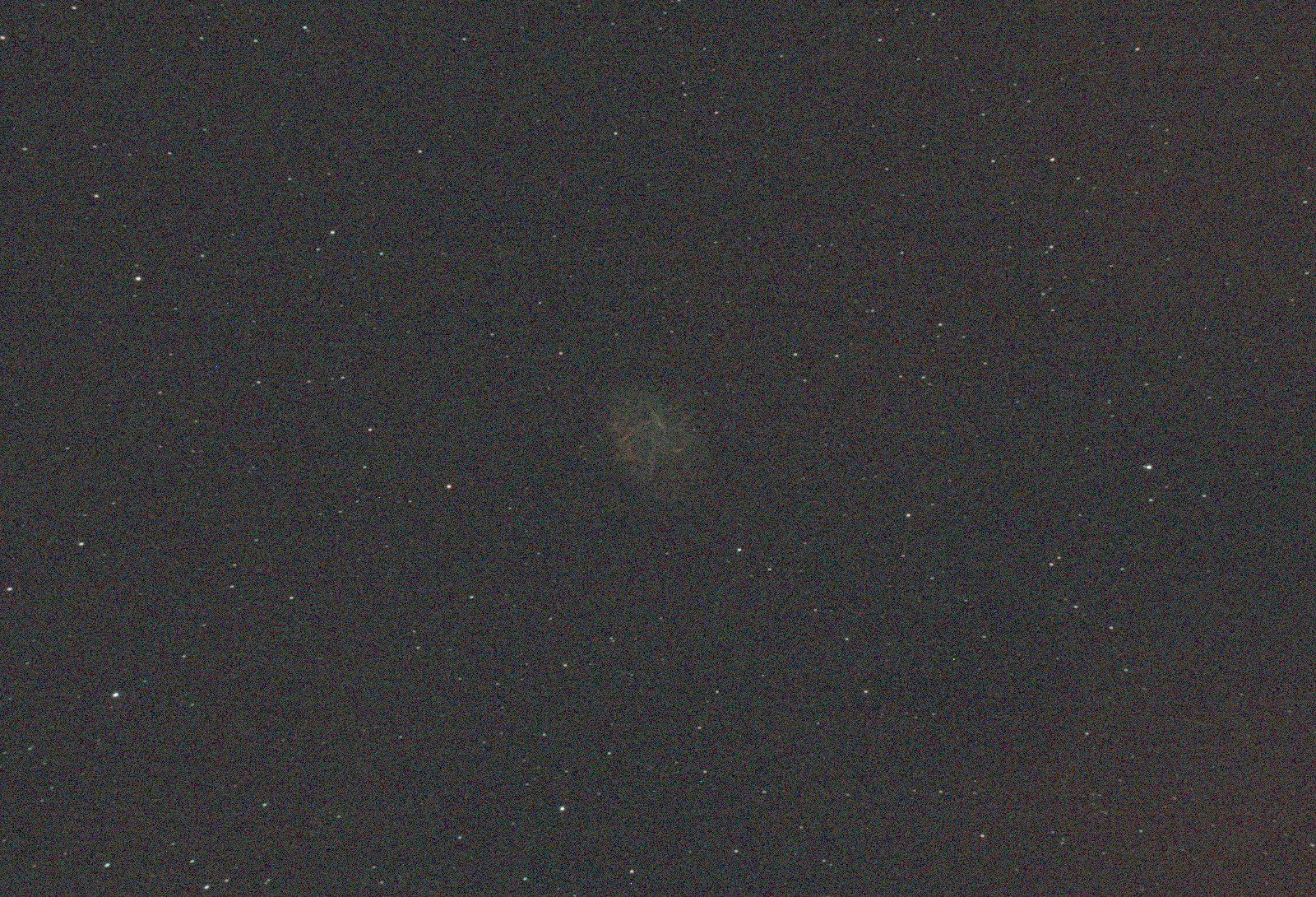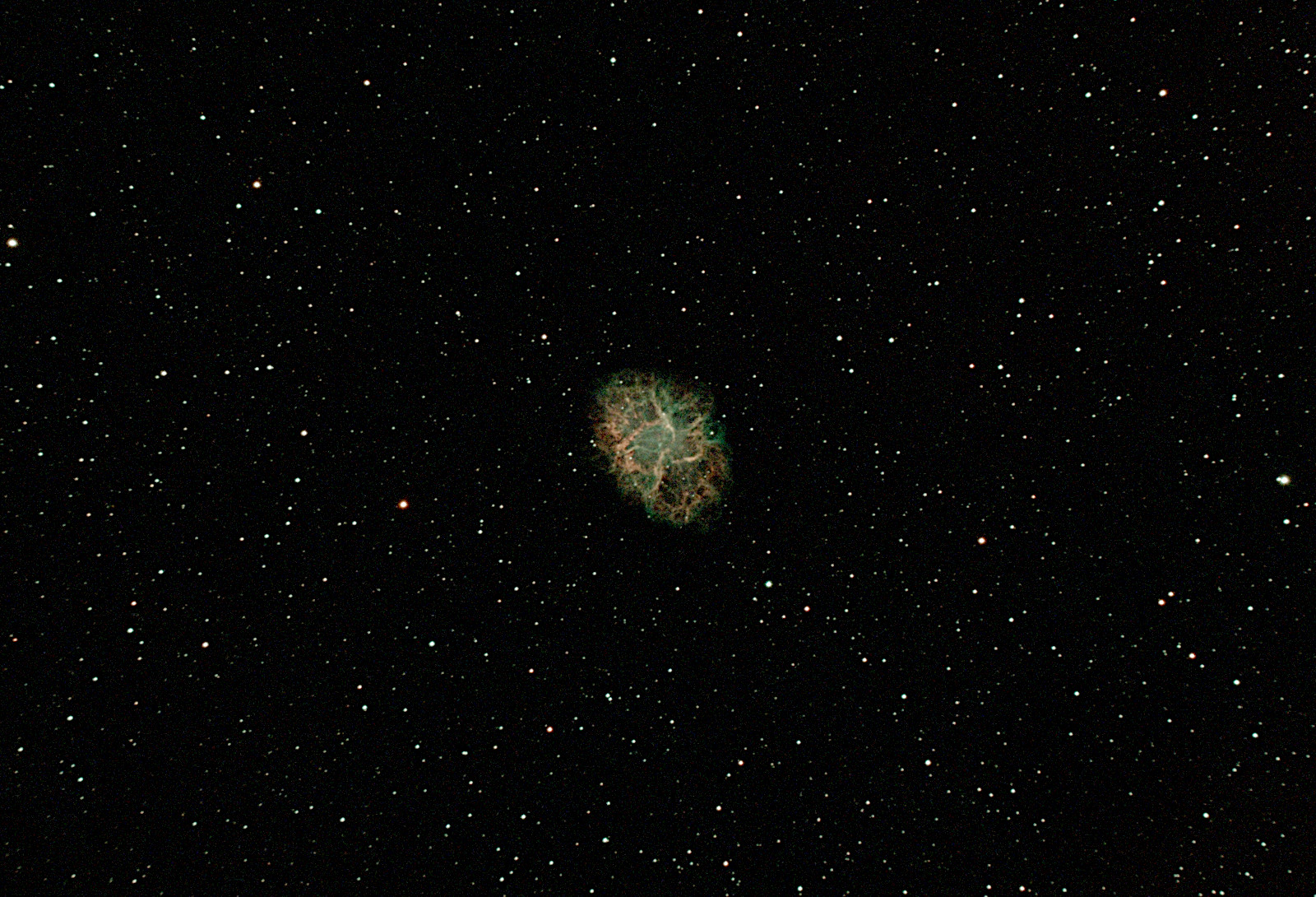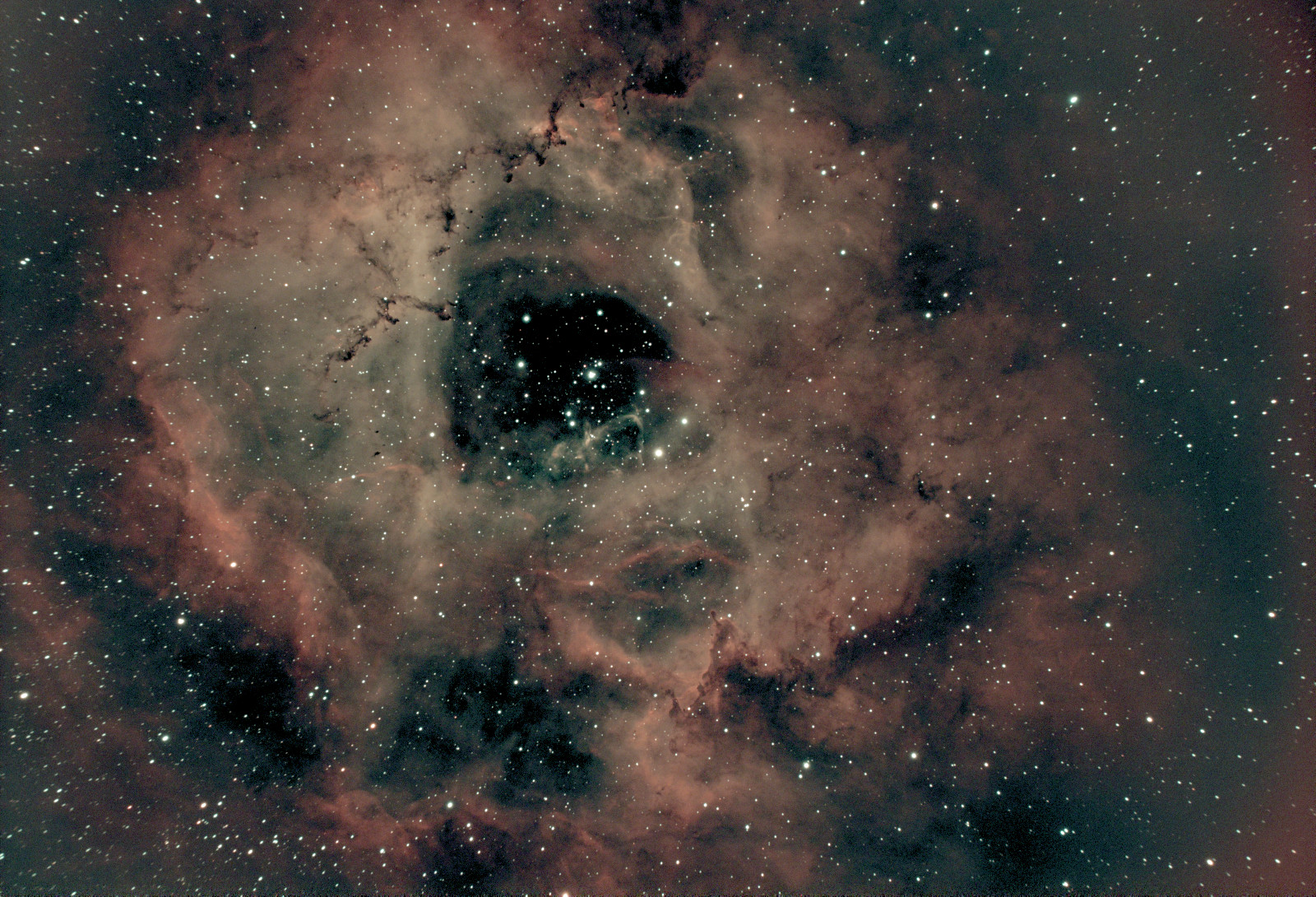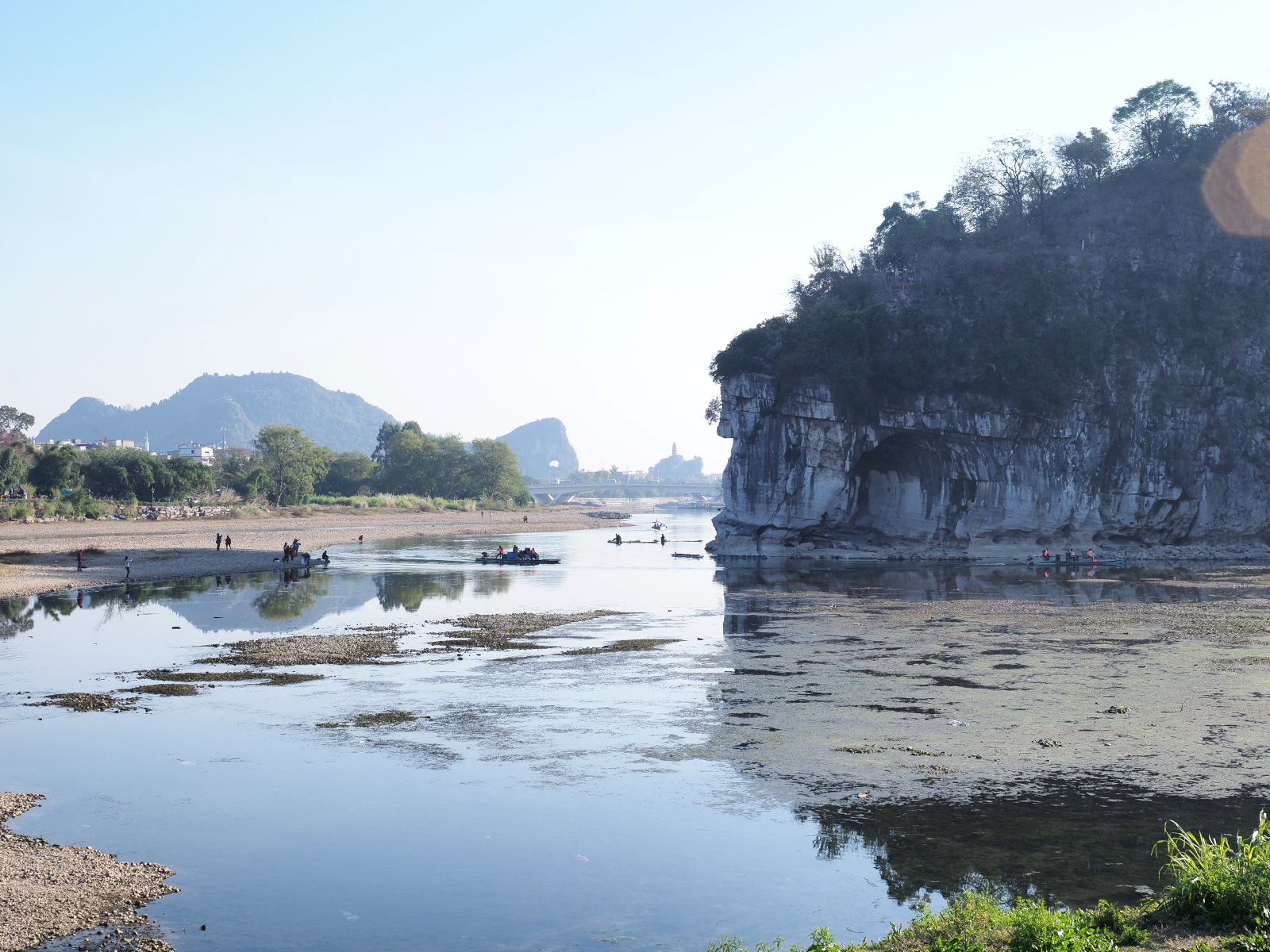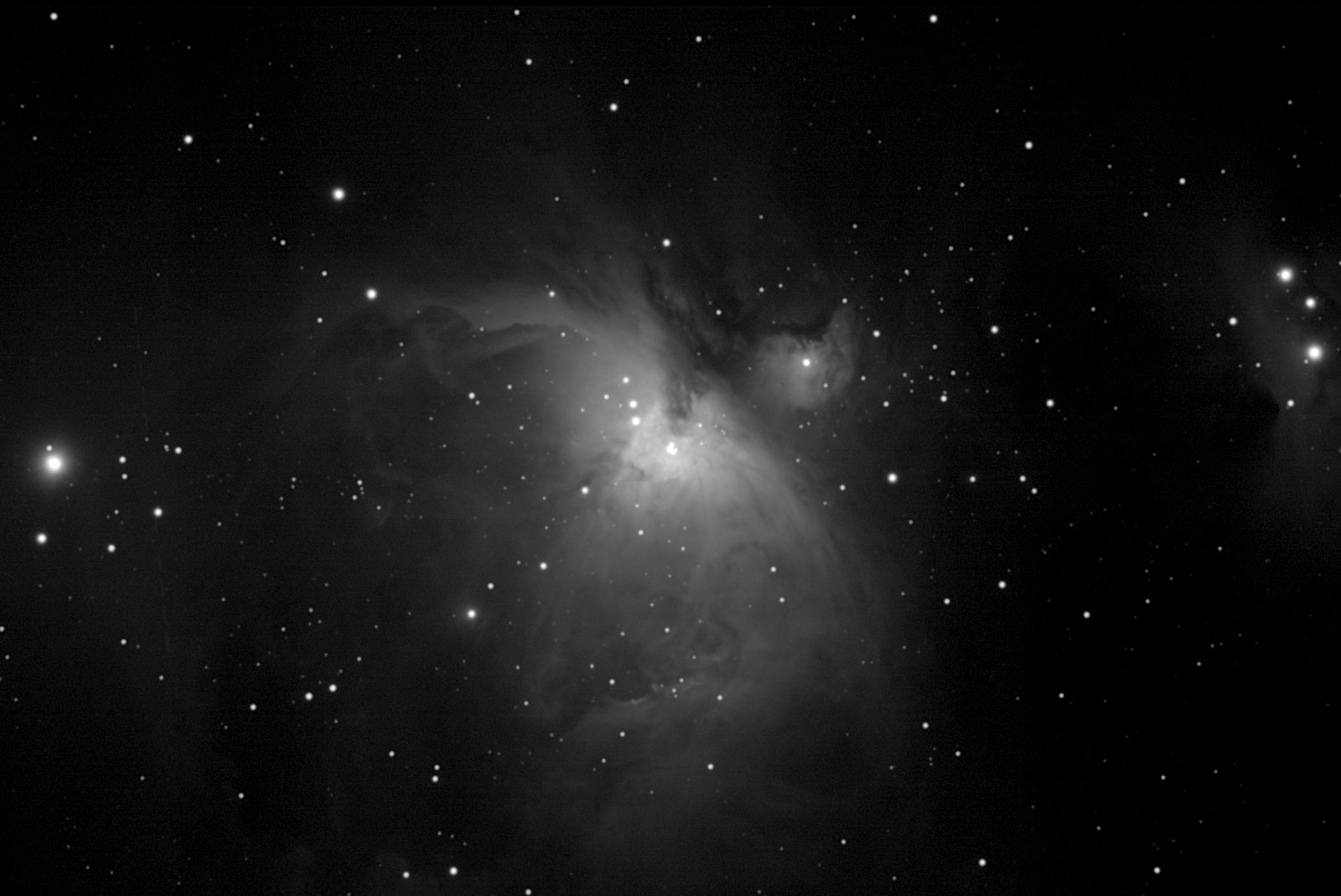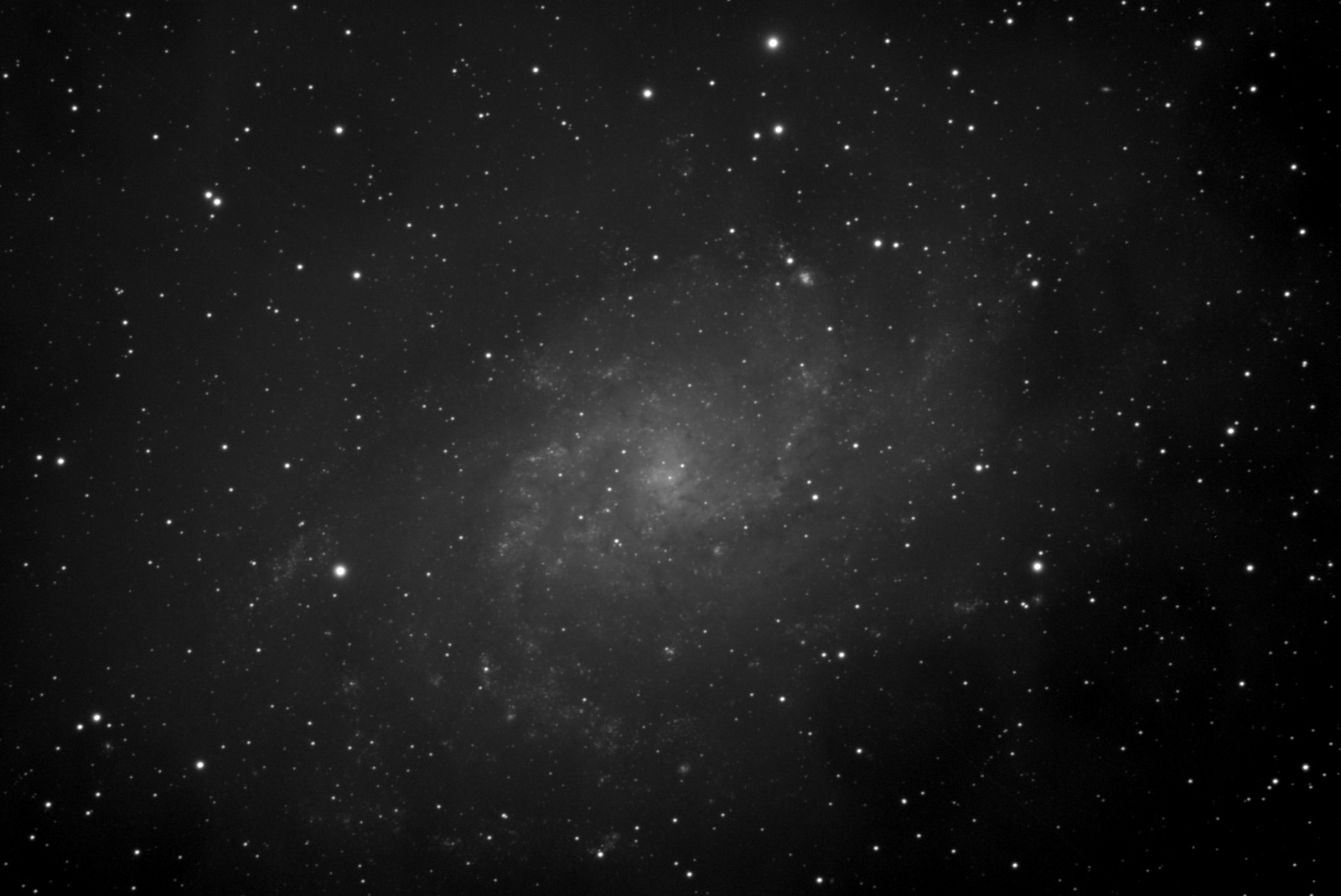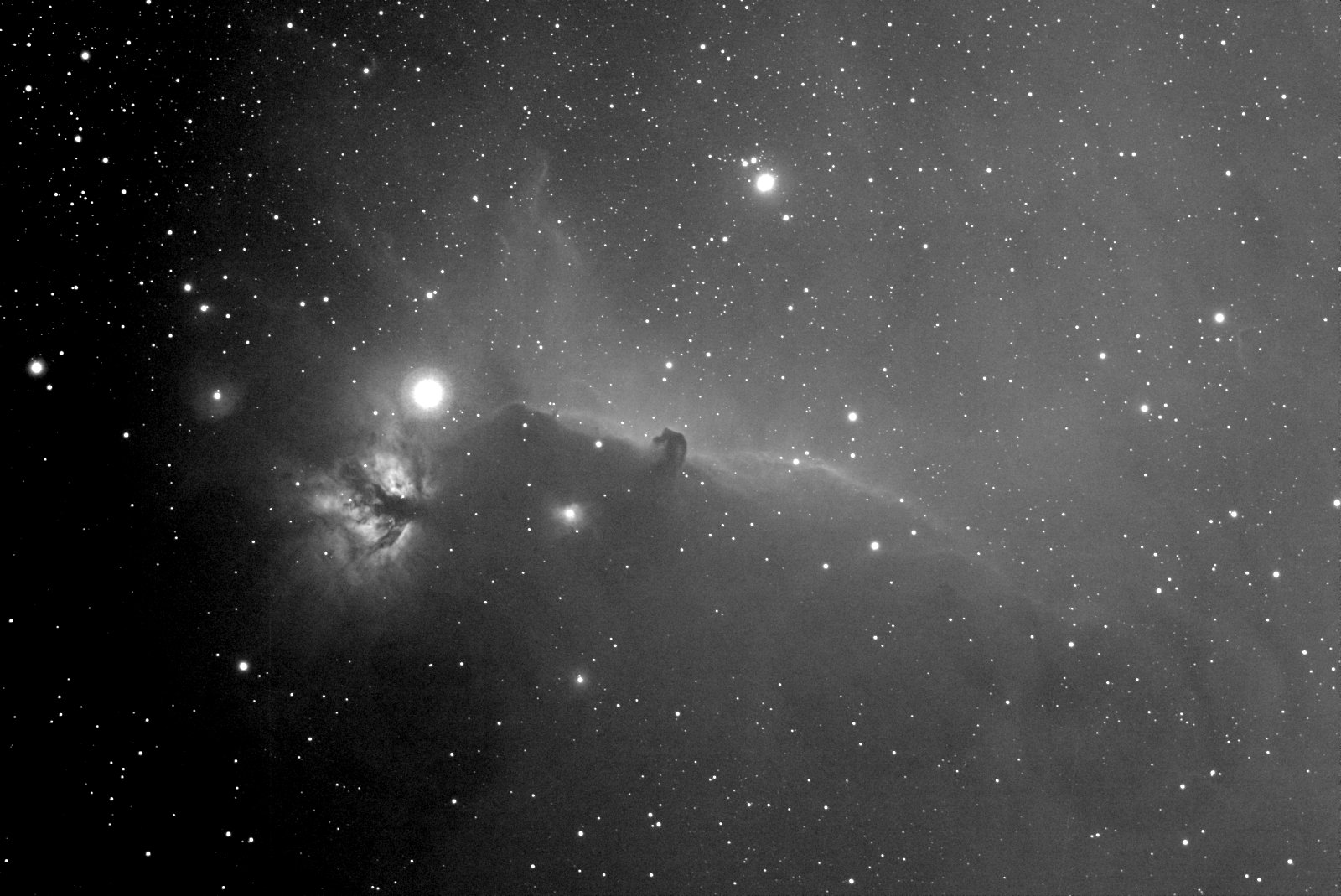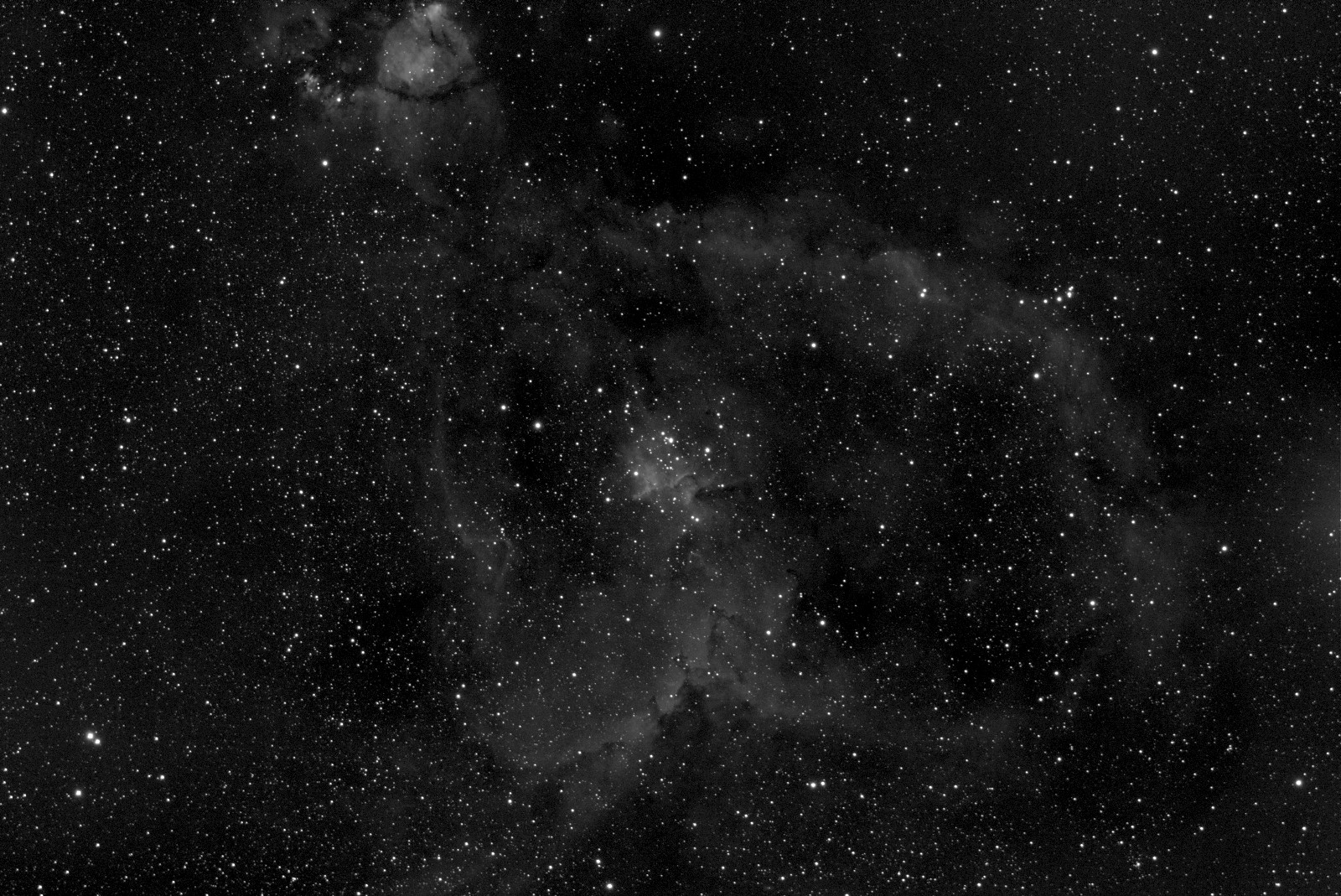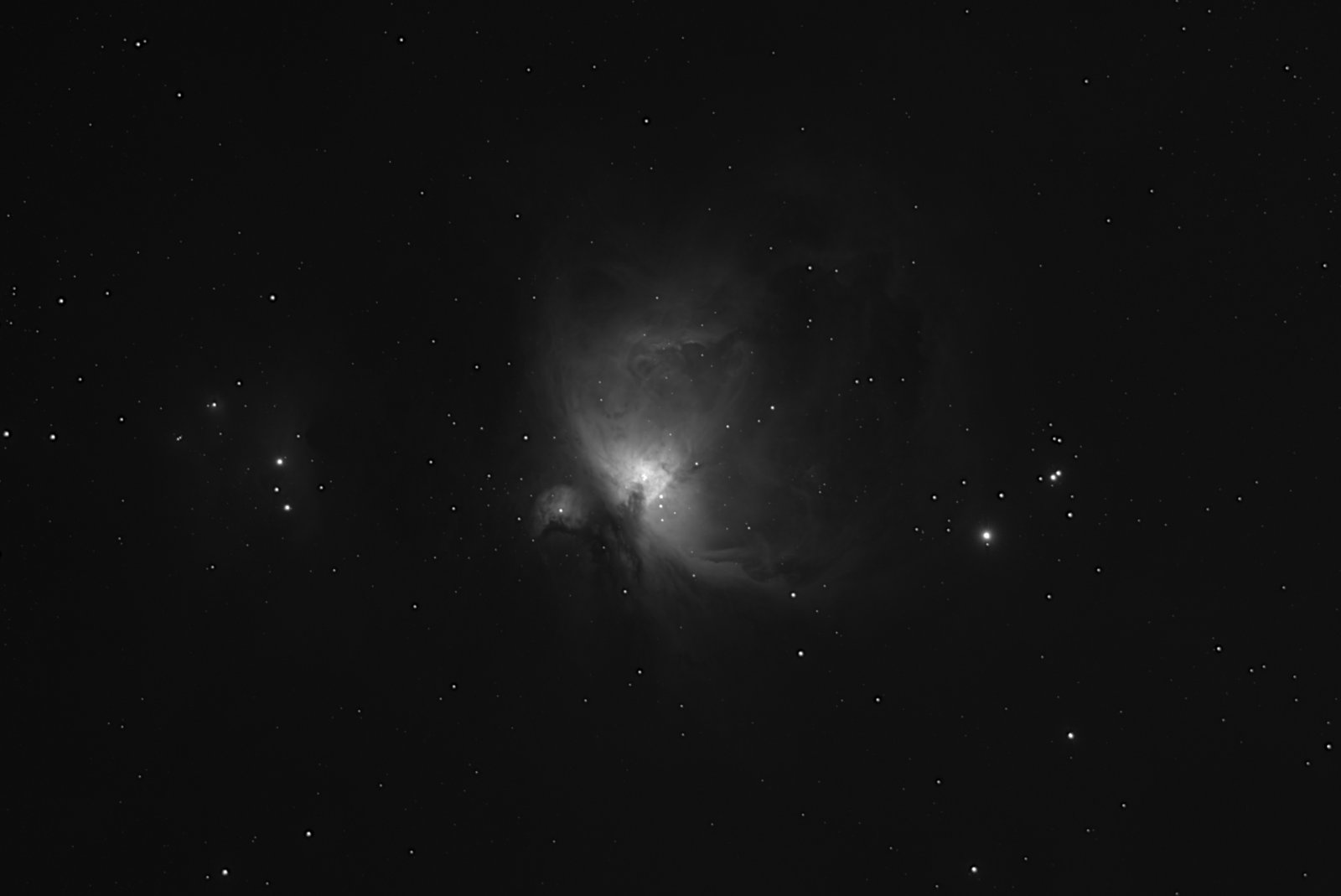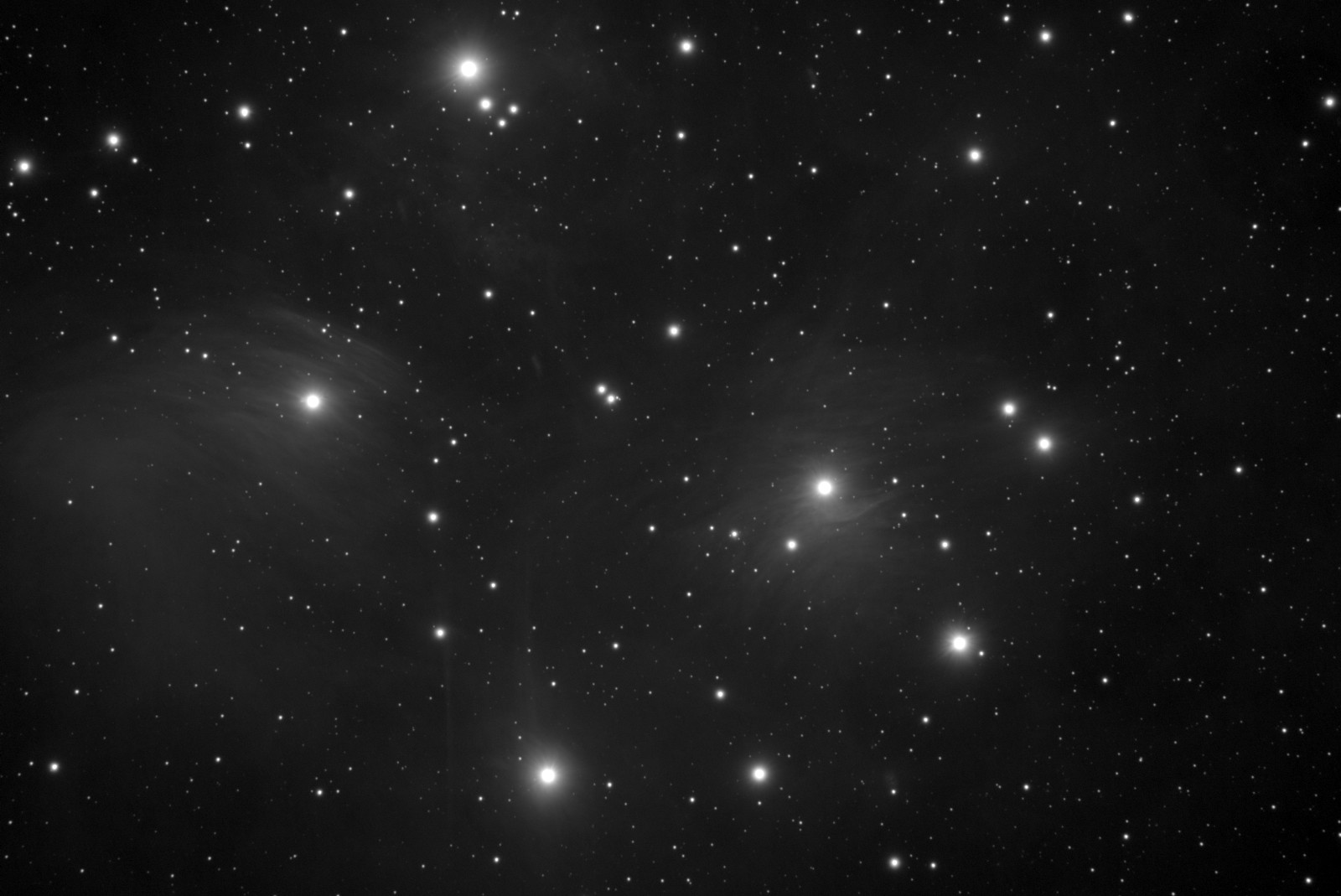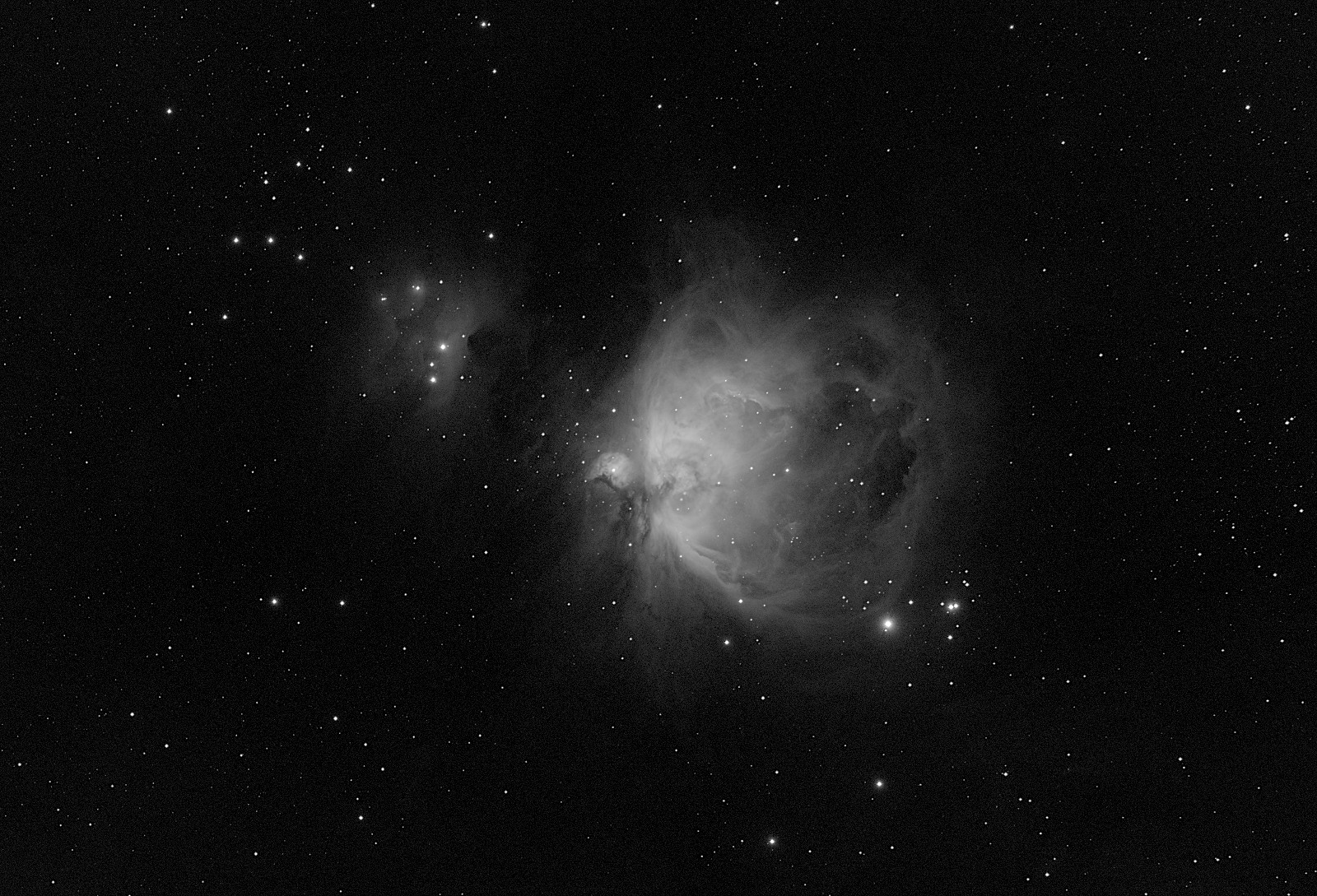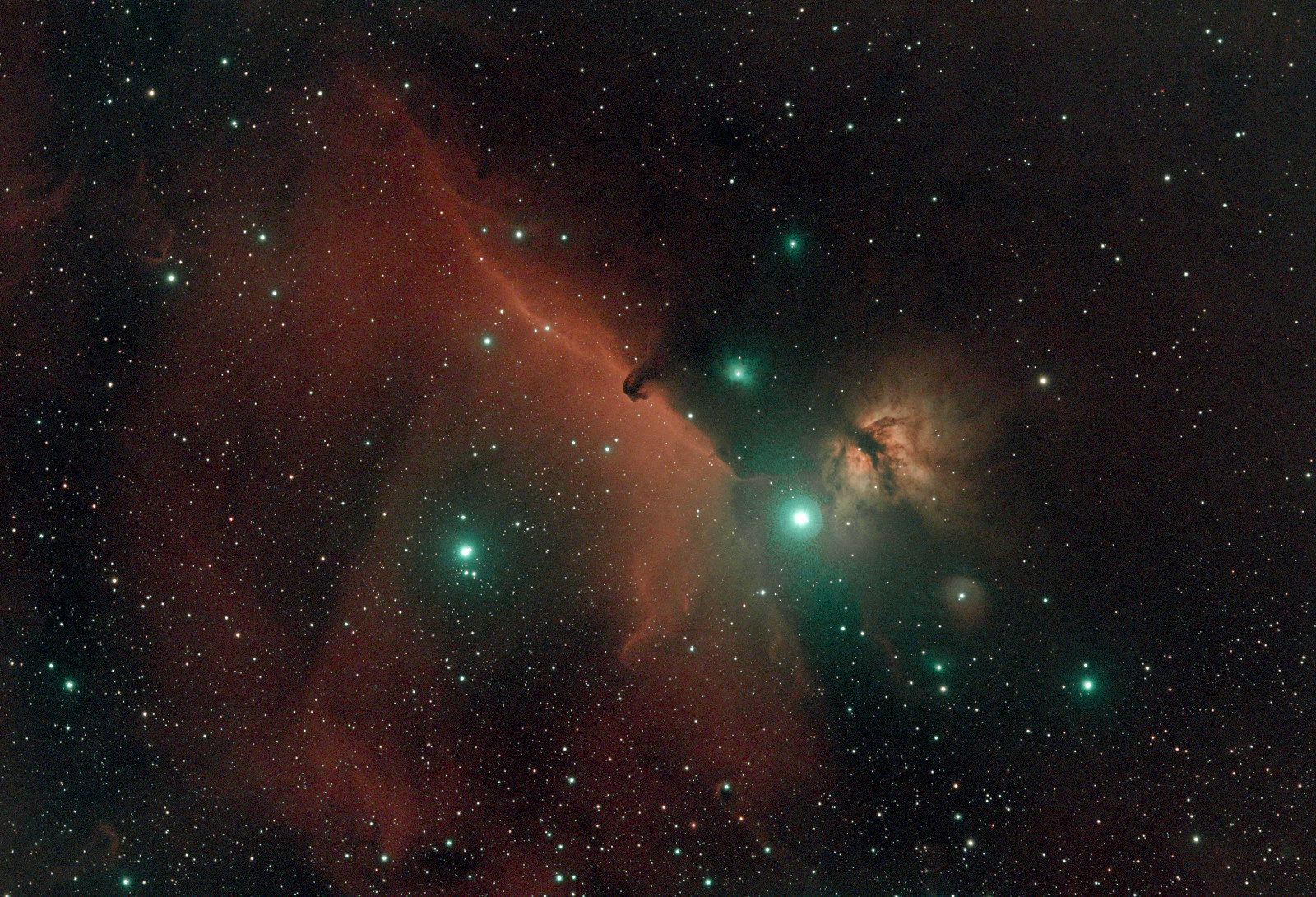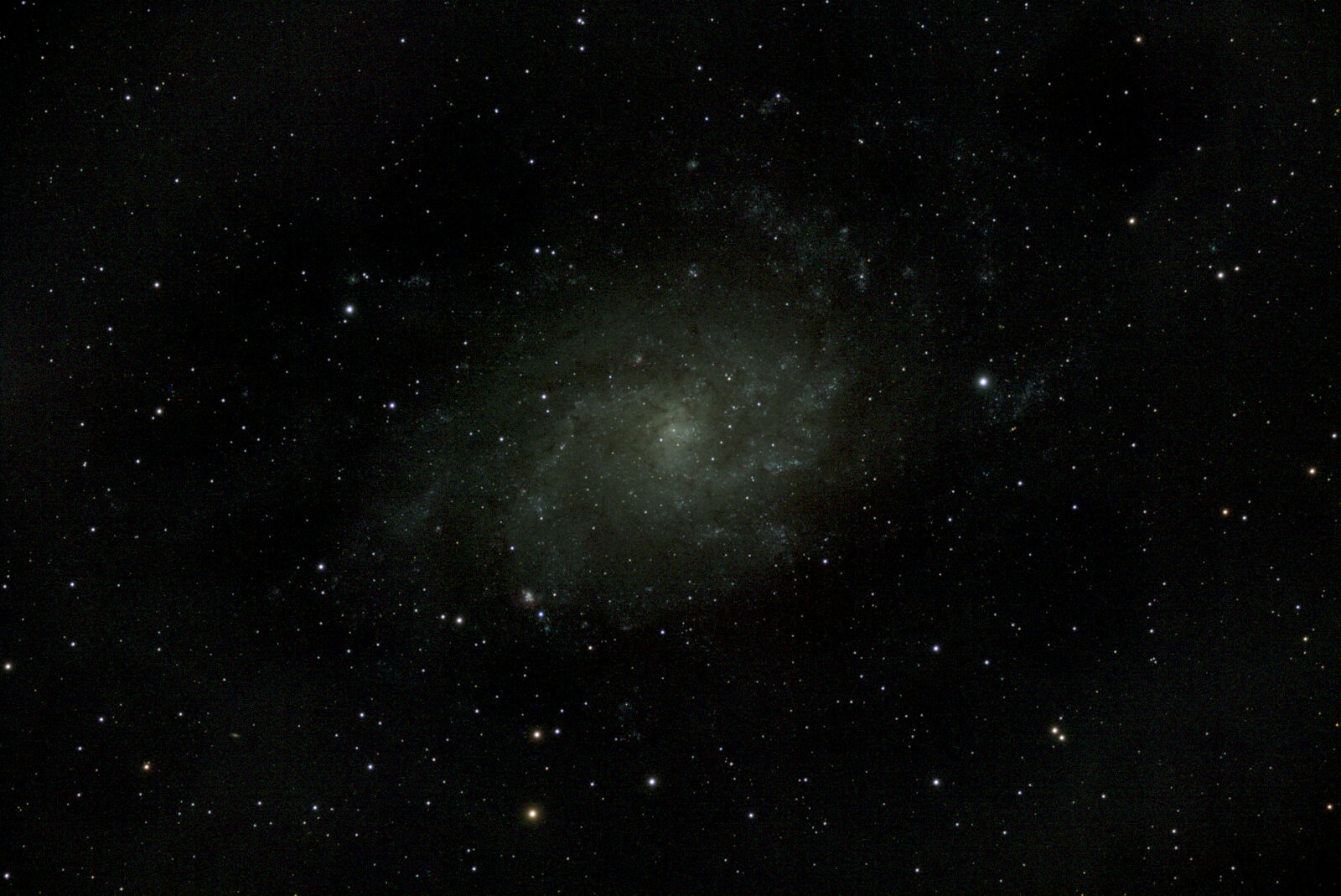
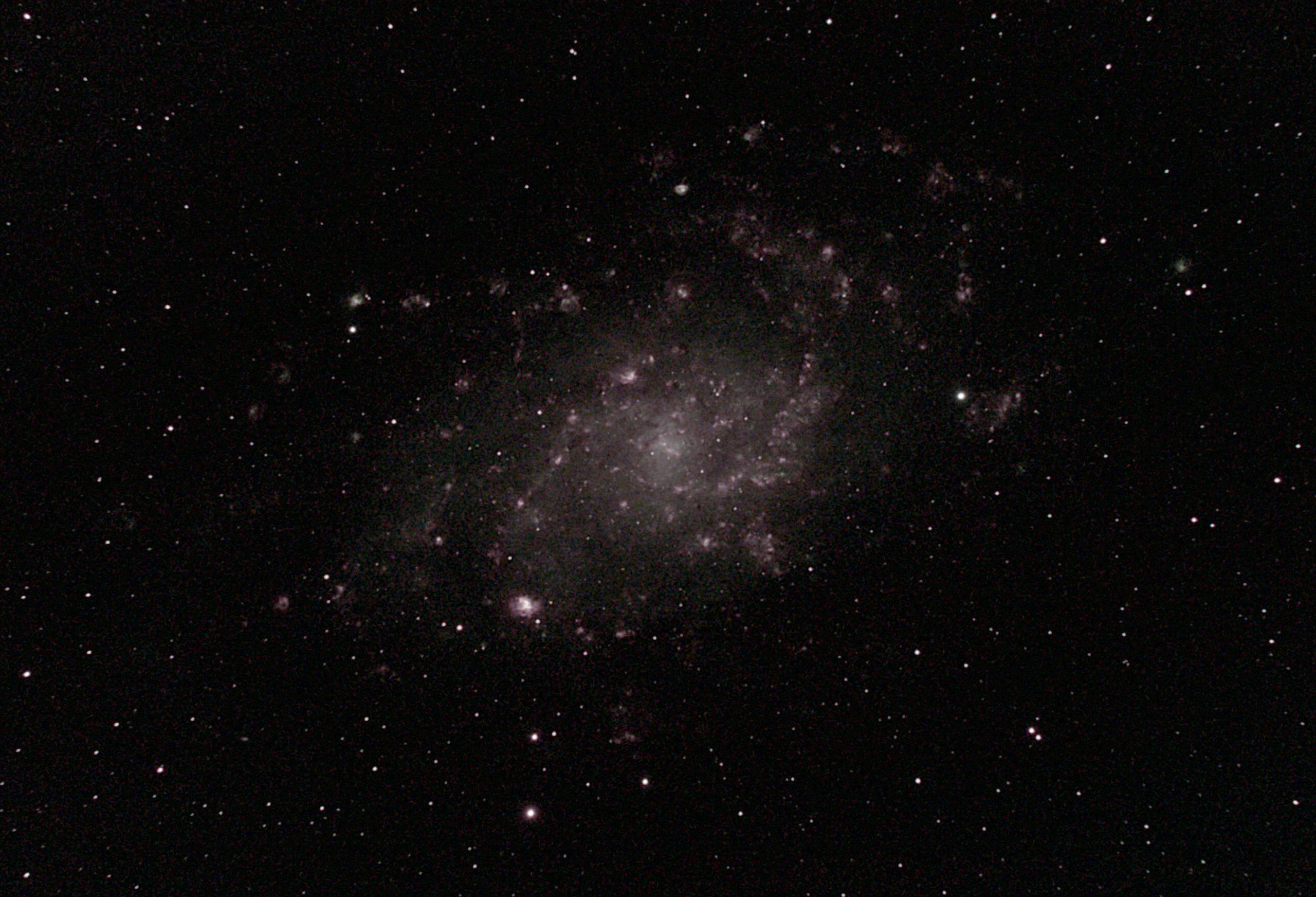
The sky here at Songbird Central suffers heavy pollution, both light pollution and chemical pollution. Astrophotography would be unsatisfying without filters to reduce the effects of that pollution.
I’ve forgotten exactly which filter it was I used with the first photo — I think the “Optolong L-eNhance”. A good general purpose filter. The image is dim, but if you look closely and carefully, there’s lots of sharp detail. A stack of 30 one minute exposures, for half an hour total.
The second photo was taken with the “Triad Ultra” filter, which emphasizes the light from nebulae, a stack of 13 three minute exposures and 17 five minute exposures — a little over two hours total. In this image the white light from the stars has been reduced, while the red light from the glowing gas areas is emphasized. The image is redder, overall, and there are many tiny reddish fuzzy blotches, which are nebulae within M33.
How does M33 really look? Photos are stories, not truth. If you were a lucky human with opportunity to look at M33 through a big enough telescope, you might see something like the first picture, but not the colors in the second. If you really got into it, you would recognize the overall shape of the galaxy, and you might even recognize details in the patterns of the stars.
[Edited to adjust the scale and other corrections.]
